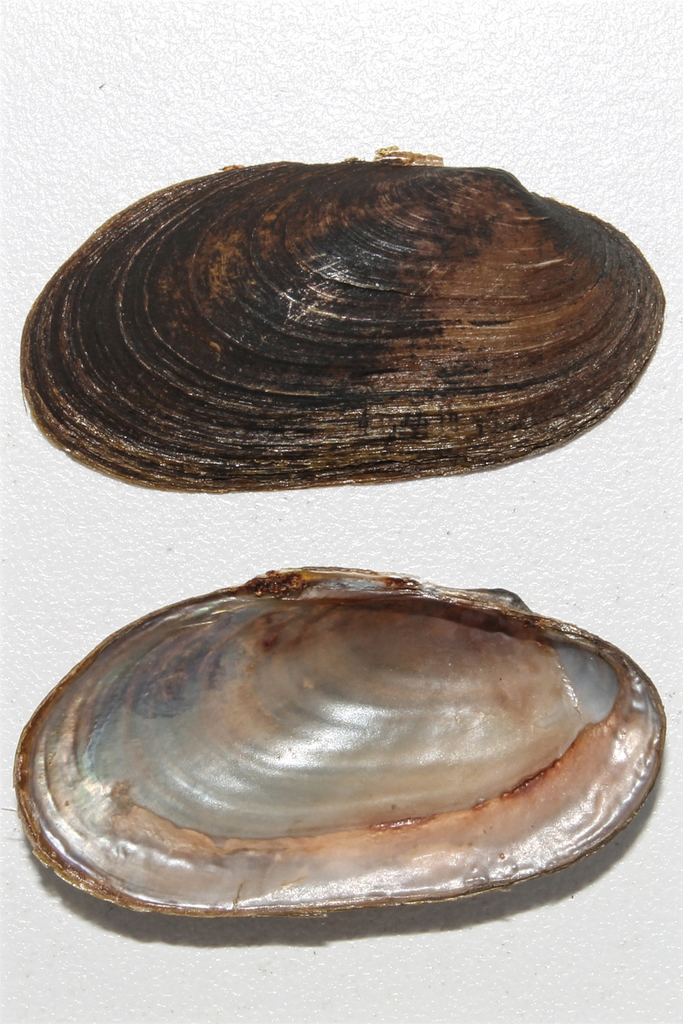U.S. Fish and Wildlife Service proposes to list the salamander mussel as endangered

The U.S. Fish and Wildlife Service is proposing to list the salamander mussel (Simpsonaias ambigua) as endangered under the Endangered Species Act and is seeking public comment. The salamander mussel is a species of freshwater mussel currently found in scattered populations across 14 states from New York southwest to Arkansas. They are also proposing to designate critical habitat for the salamander mussel.
The proposal to list the salamander mussels opens a 60-day comment period, after which U.S. Fish and Wildlife will evaluate available information and determine whether the species should be protected under the Endangered Species Act. The comment period ends October 23, 2023.
The salamander mussel is a small, thin-shelled mussel that inhabits swift-flowing rivers and streams with areas of shelter under rocks or in crevices. The mussel is found in Arkansas, Illinois, Indiana, Iowa, Kentucky, Michigan, Minnesota, Missouri, New York, Ohio, Pennsylvania, Tennessee, West Virginia, Wisconsin and Ontario, Canada.
U.S. Fish and Wildlife worked with species experts to conduct a species status assessment for the salamander mussel. The species status report includes the best scientific and commercial data available concerning the status of the salamander mussel, including the impacts of past, present and future factors affecting the species. Based on the report and other information, U.S. Fish and Wildlife determined that the species faces extinction and meets the definition of endangered under the Endangered Species Act.
The species status assessment found that of the 66 known existing populations across the salamander mussel’s range, more than 80 percent are at high risk from one or more primary threats, and about 14 percent of the populations are at moderate risk. None of the populations across the range is experiencing low risk.
The review of the salamander mussel’s status identified several primary threats including contaminants, changes in water flow, landscape alteration, invasive species and risks to the salamander mussel’s host species, the mudpuppy, which plays a vital role in the mussel’s life cycle. Freshwater mussels are among the most sensitive of aquatic species, so changes in water quality can have a range of negative impacts.
The Service is also proposing to designate critical habitat for the salamander mussel. Critical habitat is an area that contains essential habitat features for the survival and recovery of a listed species. A critical habitat designation imposes no requirements on state or private actions where no federal funding, permits or approvals are required. The Service is proposing approximately 2,012 river miles in 37 units as critical habitat for the salamander mussel. The proposed units include the river channel up to the ordinary high water mark. Riparian lands adjacent to the river channels are not included. About 500 river miles of the proposed designation overlaps with critical habitat already designated for other threatened mussel species.
Similar to other freshwater mussels, the salamander mussel has a unique life cycle that relies on a host for successful reproduction, but the salamander mussel is the only freshwater mussel in North America to use a non-fish host. The mudpuppy (Necturus maculosus), the only host for salamander mussel, is a fully aquatic salamander species that is present within the same habitat preferred by the salamander mussel during the summer and fall when female mudpuppies are guarding their nests under large flat rocks. The salamander mussel’s larvae (called glochidia) develop on the gills of the mudpuppy before falling off into the stream substrate.
Like other freshwater mussels, the salamander mussel feeds on particles, including phytoplankton, zooplankton, rotifers, protozoans, detritus, and dissolved organic matter, in sediments or suspended in the water. The salamander mussel lives for approximately 10 years.
Freshwater mussels are considered “silent sentinels” of rivers and streams. Where mussels thrive, water quality tends to be good. Where mussels are declining, it’s an indication that rivers and streams they inhabit may be unhealthy. In addition to being indicators of stream health, mussels can keep the water clean by filtering their food from the water, and with it, sediment and other pollutants. There are more than 900 species worldwide, with North America being a global center of mussel diversity, with about 300 species. Despite the high amount of diversity, 65% of North American freshwater mussel species are imperiled.
The proposal to list the salamander mussel and associated critical habitat proposal appeared in the Federal Register on August 22, 2023, and opened a 60-day public comment period that closes on October 23, 2023. The proposed rule and supporting documents are available for comment online at https://www.regulations.gov under docket number FWS-R3-ES-2023-0058. Hard copy comments may be mailed to Public Comments Processing, Attn: FWS-R3-ES-2023-0058, U.S. Fish and Wildlife Service, MS: PRB/3W, 5275 Leesburg Pike, Falls Church, VA 22041–3803.
It is requested that interested parties send comments only by the methods described above. All comments will be posted on https://www.regulations.gov.
Learn more about the salamander mussel at https://www.fws.gov/species/salamander-mussel-simpsonaias-ambigua.
Provided information



